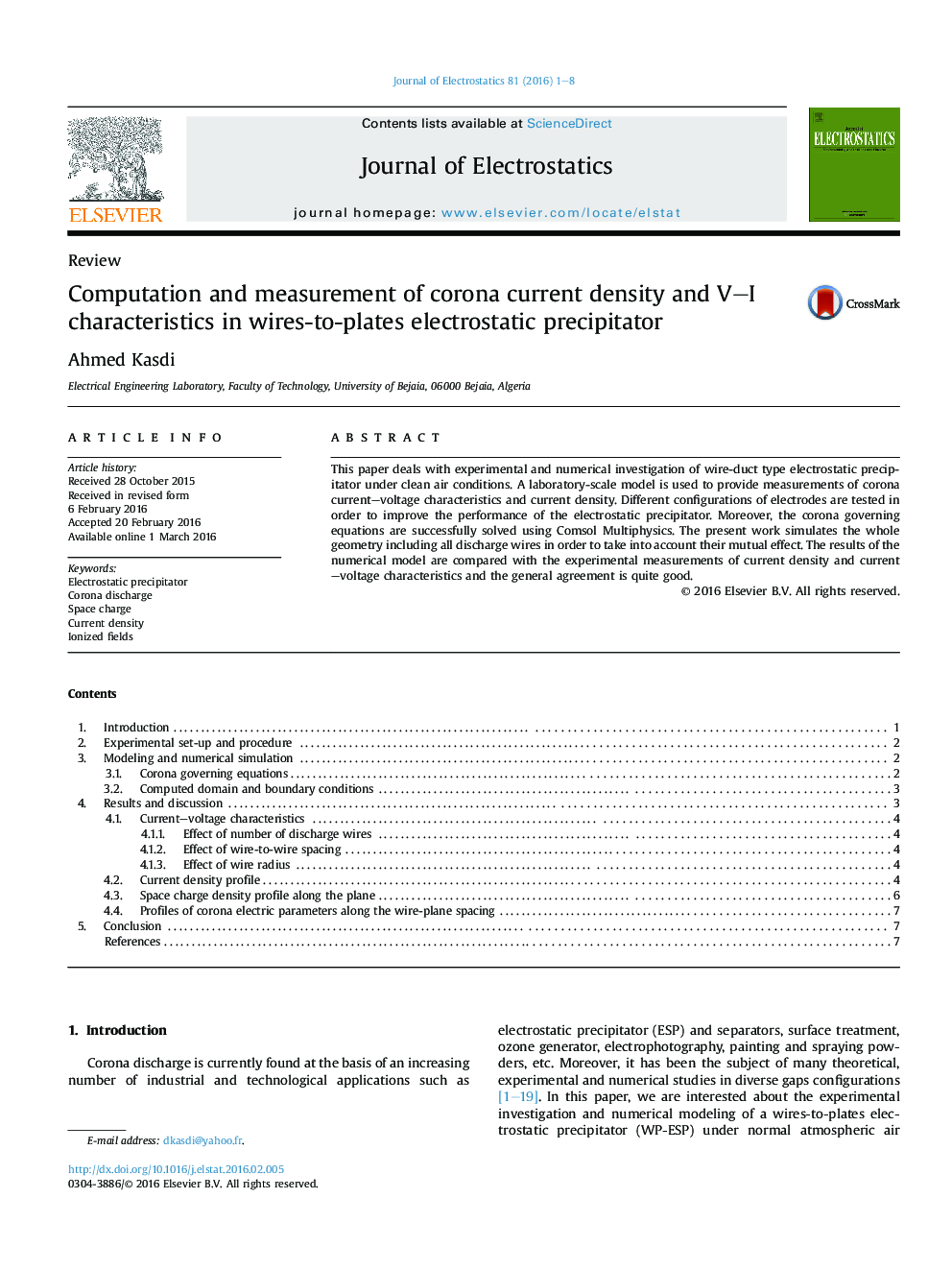| Article ID | Journal | Published Year | Pages | File Type |
|---|---|---|---|---|
| 725342 | Journal of Electrostatics | 2016 | 8 Pages |
•The increasing in the number of discharging wires improves the performance of the precipitator.•Reduction in the wires spacing leads to decrease the total collected current of the ESP.•The current density profile on the collecting plate presents a wave shape with higher values in front of each wire.•A current density peak value under the two wires at the ends of the wires-to-plates configuration is observed.
This paper deals with experimental and numerical investigation of wire-duct type electrostatic precipitator under clean air conditions. A laboratory-scale model is used to provide measurements of corona current–voltage characteristics and current density. Different configurations of electrodes are tested in order to improve the performance of the electrostatic precipitator. Moreover, the corona governing equations are successfully solved using Comsol Multiphysics. The present work simulates the whole geometry including all discharge wires in order to take into account their mutual effect. The results of the numerical model are compared with the experimental measurements of current density and current–voltage characteristics and the general agreement is quite good.
